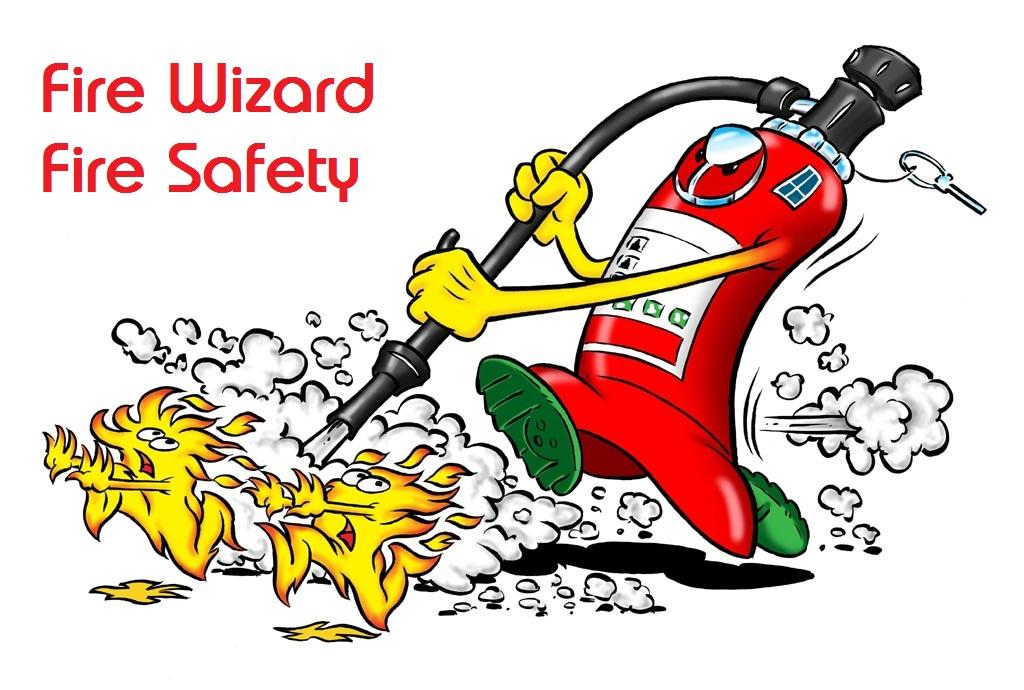-
Posts
2,707 -
Joined
-
Last visited
Everything posted by AnthonyB
-
If that is a final exit to the outside then there is every likelihood it doesn't need to be a fire resisting door so you can simply fill the holes with whatever you want to prevent draughts.
-

First floor flat own entrance, fire door?
AnthonyB replied to First floor door's topic in Fire Risk Assessments
No it isn't - an external entrance door does not need to be a fire door unless onto an external escape stair or a balcony with escape in only one direction. -
https://www.flameguardbedding.co.uk/Fire-Retardant-Pyjama-Sets-Extre--1 All sorts of special dressing gowns, nightwear, etc can be found if you search
-

Custodial Premises Fire Safety Design Guide (FSDG) - source?
AnthonyB replied to DBrown's topic in Fire Risk Assessments
All I can find free are: https://assets.publishing.service.gov.uk/media/6243119ce90e075f1088f5c1/ps-11-fire-safety-march-2022.pdf https://www.legislation.gov.uk/ukdsi/2018/9780111164631/pdfs/ukdsi_9780111164631_en.pdf So it looks like having to pay for it - if it's like the other ones for special sectors like BB100 for fire safety design in schools in it's depth and specific content it should be worth it if doing prisons work (have you tried asking the establishment you are working at for a copy?) -
First Tier Tribunal - challenge the necessity for the door being changed - most flat fire door replacements are not required to meet the functional requirements of the law and the guidance (which has special status such that if you follow it you tend to be deemed compliant if someone alleges there is an issue) However you need to establish that the current doorset meets the requirements applicable to the block - the minimum standard being based on age, layout & height of the block. This note reinforces that wholesale replacement is often not required - https://www.gov.uk/government/publications/fire-safety-england-regulations-2022-fire-door-guidance/fire-safety-england-regulations-2022-fire-door-guidance
-
It's not quite a BS7273-4 device, but it's probably the nearest guidance - this would equate to weekly rotational testing, servicing in accordance with manufacturers instructions = basically it's risk assessment based
-
https://specialistdoorsolutions.com/latest-news/what-are-vision-panels
-
Yes, for the external walls and due to the hallway. Not many requirements would be expected to come off the back of it though.
-

How can you stop children from a childcare centre leaving through a fire exit?
AnthonyB replied to a topic in Fire Exits
It may be at a lower than usual height for wheelchair users (even though I'm guessing there aren't any!) Their safeguarding & fire risk assessments need to match up to provide a suitable balance between placement for escape and placement to avoid children escaping. -

How many FRAs for a commercial building with flats above
AnthonyB replied to Ron's topic in Fire Risk Assessments
Are there internal common areas for the flats? If not then a building owner FRA would be of the exterior of the building primarily. Where there are internal common areas as a minimum a sample of flats would need access to their hallways to inspect the front fire door properly from both sides and to check if any common fire alarm system devices are present. If the tenant is still in occupancy through & after the works then it is for them to review their FRA not you - it is up to them whether they do this in house or via an external accredited person. -
As the law is risk based to achieve functional standards and is not a prescriptive list of specific individual requirements for every aspect of Health & Safety if there is no risk of entrapment your H&S risk assessment might accept it - speak to your H&S person to see if your HSRA can accept this
-

Can I sell a chair without fire safety label on ebay?
AnthonyB replied to a topic in Passive Fire Protection
Report it to Trading Standards, it must have the permanent label if sold for domestic use. -
If you follow the longstanding and current guidance for existing blocks, then FD30 doors and glazing fire protected unless the bottom sill is 1100mm high or greater.
-
I assume they mean an illuminating sign and siren to warn of 'fire shutter closing' often included in modern purpose built kits, sometimes missing from older set ups or those assembled using standard shutter parts. The requirement for warnings may be in the powered shutter standard BS EN 13241-1:2003 (I don't have a copy) plus some form of warning would be likely under The Health and Safety (Safety Signs and Signals) Regulations 1996 Just because it wasn't mentioned before doesn't mean it shouldn't have been!
-
Q : do we need to replace domestic twin & earth cabling to these detectors with fire proof/resistant wiring ? If cable failure would cause the AOV to fail safe to the open position then no, otherwise yes Q : is there a legal requirement for an AOV or can we convert to a MOV ? No, if the existing installation is an AOV you can't make something worse than original, just equal or better Q : is there a legal requirement for signage in this single staircase, single exit, less than 9m run scenario ? No requirement for fire exit signage, no requirement for floor and flat numbering if an existing building (but good practice), fire instructions notice required near entrance or on notice board, etc
-
If you actually need to upgrade at all (often not actually required in smaller existing blocks as backed up by official guidance) then you should be going for combined intumescent & smoke seals. (https://www.gov.uk/government/publications/fire-safety-england-regulations-2022-fire-door-guidance/fire-safety-england-regulations-2022-fire-door-guidance) Costs are down to the individual leases & agreements for the block - front doors are usually the flat owner, the meter cupboards more of a grey area
-

Third floor - rules for second means of escape
AnthonyB replied to SJRSJR's topic in Fire Prevention
Unfortunately Building Control are getting less helpful and less flexible than before, often they require a Chartered or Incorporated Fire Engineer to author any strategy that varies from the norm and for the cost of that you may as well have upgraded your heritage doors! -
Real trees are only a particular problem if not watered regularly - also it's whats on the tree and around it that need to be considered (ignition source from lighting on the tree, flammable decorations, etc) as well as where you are wanting to put it. It's a risk based approach for each venue
-

Third floor - rules for second means of escape
AnthonyB replied to SJRSJR's topic in Fire Prevention
The guide doesn't address your layout as it assumes protection of the stair rather than the greater expense of an external stair unless you are a storey higher than you are. You could argue to Building Control that the stair is over and above the requirements and would compensate for an unprotected stair as the upper floor isn't relying on it for safe escape, after all Approved Document B isn't law & if you can show an alternative approach provides equal safety they are meant to accept it- they an only say no -
What height/number of floors is the building and what evacuation strategy does it have? Depending on these factors there may be a legal requirement for them to assess and take reasonable measures in relation to your fire risk & evacuation needs from next year.
-
Considering how bad the situation is I'd consider it falls under Regulation 10 & get on with it and worry about the paperwork afterwards. Whilst put in place with the best intent unfortunately in the rush to put legislation in place post Grenfell they ended up with something over bureaucratic and severely under resourced and whilst you have the equivalent of no fire door at all (replicating the exact conditions that contributed significantly to the number of deaths) it's more important to keep people safe. If it was less severe a situation then you could wait. Notification of emergency repairs to existing HRB 10.—(1) Where work to existing HRB consists only of emergency repairs and it is not practicable to comply with regulation 11(1) (building control approval for work to existing HRB) before starting the work, the client must— (a)give a notice to that effect to the regulator, describing the work and the reasons for the urgency as soon as reasonably practicable after the work has started, (b)send a copy of that notice to the responsible person as soon as reasonably practicable after the work has started, and (c)submit a regularisation certificate application to the regulator in relation to the work as soon as reasonably practicable after the work is carried out. (2) In this regulation— “emergency repairs” means repairs to a building which are necessary to be carried out as a matter of urgency due to the risk to health, safety or welfare of persons in or about the building; “responsible person” has the meaning given in article 3 of the Regulatory Reform (Fire Safety) Order 2005.
-
You need the fire door report, the fire risk assessment specifying the required spec and then reference to this https://www.gov.uk/government/publications/fire-safety-in-purpose-built-blocks-of-flats and this https://www.gov.uk/government/publications/fire-safety-england-regulations-2022-fire-door-guidance to see if the recommendations made are actually required at all. Whilst sometimes doors do need replacement there are far too many being replaced with no actual legal basis due to a proliferation of both ignorance & profiteering in the fire door and risk assessment sector. The First Tier Tribunal is your go to if you suspect the requirement is excessive - I've helped people win cases against excessive fire safety works in the past - however without a lot more information I cannot give an opinion as to whether these works are needed - in a 15 year old building it's unlikely but possible (although often repair is possible) For example No fire door certification sticker, unmarked hinges and non intumescent letterboxes are often used to bring on expensive works and whilst there are many situations where this can be correct there are many more where it isn't.
-

Can I use intumescent paint instead of fire door seals?
AnthonyB replied to a topic in Fire Doors and Accessories
Better to get a supply quote & application instructions direct from the experts as there are requirements on how many coats are required to get the desired performance https://envirograf.com/product/benefits-of-intumescent-paint-for-wood/ It can't just be any old fire rated paint or it won't actually do anything - make sure that it has been tested for upgrading use. Also often the donor door has to be of a type suitable for upgrading. -

Fire doors/Storage on protected stairway
AnthonyB replied to FacilitiesNAE's topic in Fire Doors and Accessories
There is risk it could be left ajar after use or not held enough on the latch to resist the pressures caused by a developed fire,both rendering the door ineffective. The keep locked shut designation is in place of having a self closer on the door - if the locking is no longer convenient then fitting a self closer will keep the door effective. -
They are rarely used outside of ships and vehicles in the UK as they aren't recognised as an acceptable means of fire protection, you see them used more in Ireland and Spain and similar, so there isn't loads of guidance out there. Based on various sources I can find and the linked, it's mounted above the hazard at a height from the floor in the range of 1.5 - 3m https://www.emme-italia.com/sites/default/files/librettotecnico/13069-3_13129-3_Technical manual.pdf

